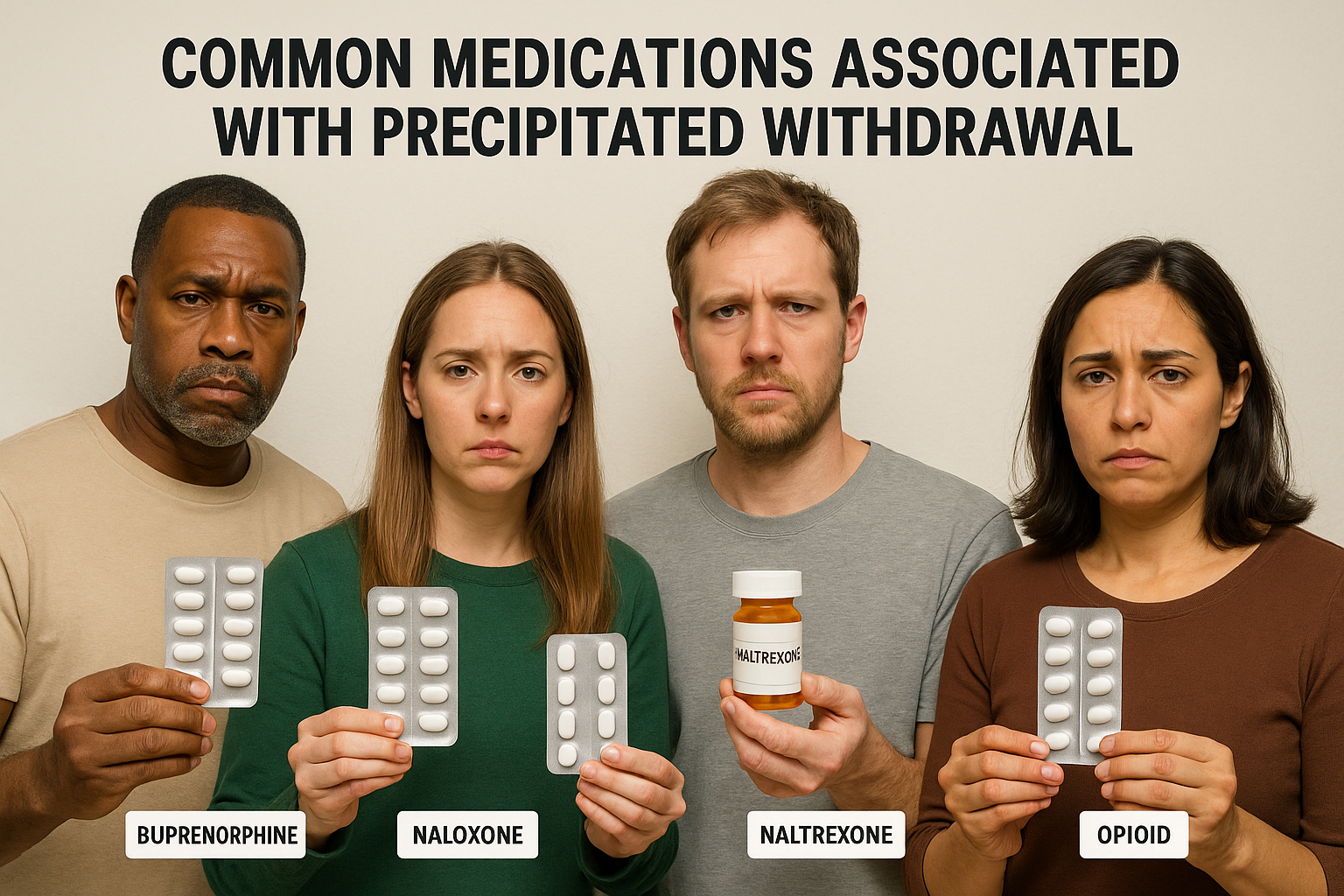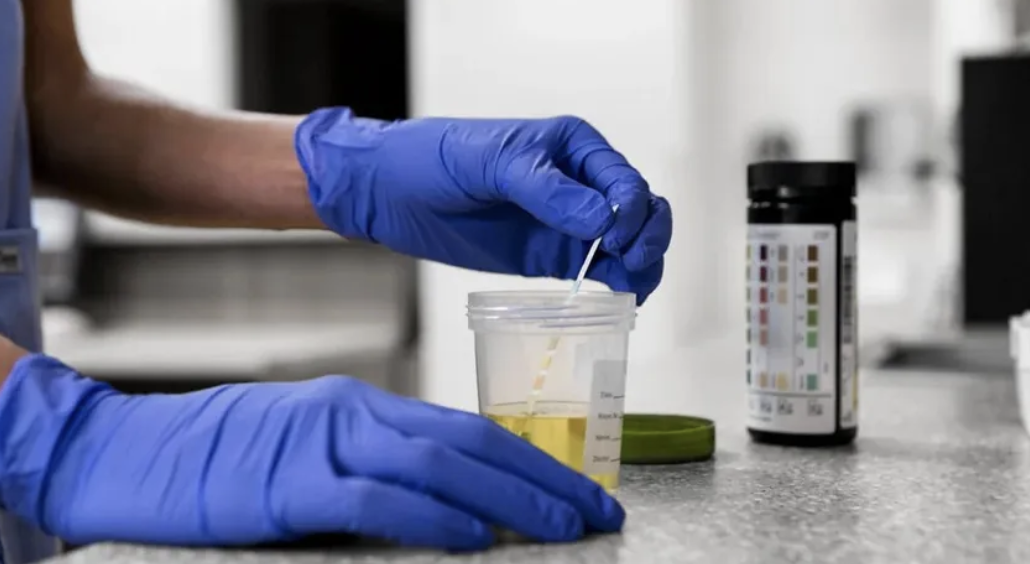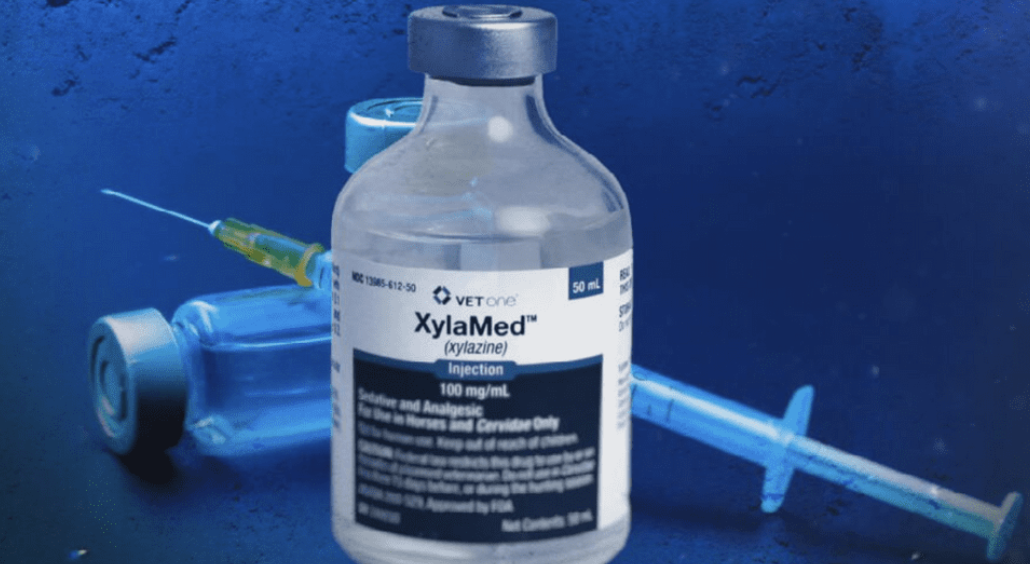Precipitated withdrawals occur when medications like buprenorphine cause sudden, severe withdrawal symptoms. In this article, we will explain why they happen, how to recognize the symptoms, and ways to prevent them.
Key Takeaways
- Precipitated withdrawals are rapid and intense withdrawal symptoms triggered by medications like buprenorphine, occurring more swiftly and severely than regular opioid withdrawal.
- Key risk factors for precipitated withdrawal include recent use of opioids, high opioid tolerance, and improper induction protocols, emphasizing the necessity for careful patient assessment and timing during treatment.
- To prevent precipitated withdrawal, clinicians should ensure patients are in moderate withdrawal before administering buprenorphine, utilize gradual induction methods, and provide thorough education on symptom monitoring and timing.
What are precipitated withdrawals?
Precipitated withdrawals are a rapid and intense onset of withdrawal symptoms triggered by certain medications, especially partial opioid agonists like buprenorphine precipitated withdrawal. Unlike regular opioid withdrawal, which unfolds gradually, precipitated withdrawal strikes swiftly and severely, often catching individuals off guard. This phenomenon is most commonly associated with medications used for opioid addiction, particularly Suboxone and Subutex.
Understanding precipitated withdrawal requires defining precipitated withdrawal from emergent spontaneous opioid withdrawal symptoms. Spontaneous withdrawal happens naturally as the body metabolizes and eliminates opioids, whereas precipitated withdrawal is triggered by medications that displace opioids from their receptors but activate those receptors to a lesser extent. This abrupt shift causes sudden and severe spontaneous opioid withdrawal severity.
Precipitated withdrawals are not just faster; they are also more intense. The precipitated withdrawal severity and speed at which symptoms manifest can be overwhelming, making it a clinically significant event that requires prompt attention and management to observe precipitated withdrawal syndromes and spontaneous and precipitated withdrawal severity.
Identifying precipitated opioid withdrawal involves observing the rapid onset of symptoms after administering certain medications. Early recognition of these telltale signs can help manage and mitigate the severity of withdrawal symptoms.

What causes precipitated withdrawals?
The root cause of precipitated withdrawal lies in the pharmacological mechanisms of medications like buprenorphine. Buprenorphine has a high affinity for opioid receptors, meaning it binds strongly to these receptors, displacing other opioids. However, it only partially activates the receptors, leading to a sudden decrease in opioid effect and triggering withdrawal symptoms.
Timing is crucial when it comes to buprenorphine induction. Precipitated withdrawal most commonly occurs when buprenorphine is taken too soon after the use of short- or long-acting opioids. The half-lives of opioids play a significant role in this timing. Short-acting opioids like heroin clear the system relatively quickly, whereas long-acting opioids like methadone take longer to metabolize and can linger in the body.
Patient history, tolerance, and induction protocols play vital roles in precipitating withdrawal:
- Individuals with higher opioid tolerance are more susceptible to precipitated withdrawal.
- Those who have not been properly assessed for their withdrawal state are at increased risk.
- Misguided induction protocols, such as administering buprenorphine without ensuring the patient is in moderate withdrawal, can lead to precipitated withdrawal symptoms.
Clinicians need to understand the opioid withdrawal syndrome etiology to tailor induction protocols and minimize the risk of precipitated withdrawal.
Signs and symptoms of precipitated withdrawal
The signs and symptoms of precipitated withdrawal are akin to those of only mild spontaneous withdrawal but are more intense and rapid in onset. Common symptoms include withdrawal syndromes:
- Nausea
- Vomiting
- Diarrhea
- Sweating
- Chills
- Cravings
- Anxiety
- Muscle aches
- Clinically significant precipitated withdrawal
- Spontaneous withdrawal syndrome
These symptoms can appear within 1–2 hours of taking buprenorphine, making the onset much quicker than traditional withdrawal.
The Clinical Opiate Withdrawal Scale (COWS) is used to classify these symptoms and their symptom severity ratings are collected. Nausea and vomiting often score higher on the COWS due to their intensity in precipitated withdrawal. This subjective opiate withdrawal scale helps objectively identify precipitated opioid withdrawal and guide appropriate clinical interventions, alongside other opioid withdrawal scales. The clinical opioid withdrawal scale provides a structured approach to assessing withdrawal symptoms.
The intensity of suboxone withdrawal symptoms is what sets them apart from regular withdrawal. The rapid displacement of full opioid agonists by partial agonists like buprenorphine leads to a sudden and severe onset of symptoms, which can be overwhelming and distressing for individuals.
Clinicians use tools like the COWS to assess opioid withdrawal, ensuring effective symptom management and confirming the severity indicative of COWS precipitated withdrawal thresholds.

Risk factors for precipitated withdrawal
Certain factors increase the risk of precipitated withdrawal. The use of long-acting opioids, such as methadone, is a significant risk factor. Methadone’s prolonged presence in the body can lead to precipitated withdrawal if buprenorphine is introduced too soon. Similarly, recent use of potent opioids like fentanyl, known for its lipophilic properties and prolonged receptor presence, heightens the risk.
Another critical risk factor is the lack of a proper withdrawal state before buprenorphine induction. Administering buprenorphine before the patient reaches a moderate withdrawal state can precipitate severe withdrawal symptoms. This underscores the importance of a supervised and well-planned induction process.
Unsanctioned or rushed induction processes are also major contributors. Without proper protocols and patient education, the risk of precipitated withdrawal increases significantly. Clinicians must adhere to best practices and guidelines to mitigate these risks and ensure a smoother transition for patients.
How to prevent precipitated withdrawal during buprenorphine induction
Preventing precipitated withdrawal during buprenorphine induction involves a combination of strategies. One key approach is to wait until the patient exhibits moderate to severe withdrawal symptoms, typically measured by a COWS score greater than 12, before administering buprenorphine. This waiting period usually ranges between 6 to 24 hours after the last opioid use.
For individuals using illicit fentanyl, guidelines suggest adjusting buprenorphine induction protocols. This can involve either low-dose or high-dose approaches, tailored to the patient’s specific situation. This strategy helps in minimizing the risk of precipitated opioid withdrawal symptoms.
Educating patients on timing and symptom monitoring is also crucial. Patients should be made aware of the importance of waiting until they are in sufficient withdrawal before taking buprenorphine. Clinicians should provide clear instructions and support throughout the induction process to ensure compliance and minimize risks.
Clinician adherence to best practices and induction protocols is vital. The use of microdosing or low-dose induction methods, such as the Bernese method, can further reduce the risk of precipitated withdrawal. These methods involve gradually introducing buprenorphine in small doses, allowing the body to adjust without triggering severe withdrawal symptoms.

What to do if precipitated withdrawal occurs
If precipitated withdrawal occurs, immediate action is required to manage symptoms and provide relief. First-line treatment strategies include supportive care, hydration, and the use of antiemetics to manage nausea and vomiting. These measures can help alleviate some of the distressing symptoms and stabilize the patient.
Continuing buprenorphine dosing versus stopping and reassessing the situation is a critical decision. In some cases, continuing with buprenorphine may help stabilize the patient, while in others, it may be necessary to stop and reassess the treatment plan. Clinicians should evaluate the severity of symptoms and the patient’s overall condition to make the best decision.
In severe cases, emergency or hospital-level care may be needed. If symptoms are unmanageable or life-threatening, seeking immediate medical intervention is crucial. Clinicians should be prepared to perform emergency surgery or refer for higher levels of care when necessary.
Clinical guidance for treatment providers emphasizes:
- The importance of monitoring and support.
- Regular assessments using tools like the COWS to track symptom severity and guide treatment decisions.
- Effective communication between the patient and healthcare provider as essential in managing precipitated withdrawal.
Medications are most commonly linked to precipitated withdrawal
Certain medications are commonly linked to precipitated withdrawal, with buprenorphine, Suboxone, and Subutex being the most notable examples. These medications are partial opioid agonists, meaning they bind to opioid receptors but do not fully activate them, leading to a reduction in opioid effect and potential withdrawal symptoms.
Naltrexone is another medication associated with precipitated withdrawal, particularly in individuals who are not fully detoxed. Naltrexone is an opioid antagonist, meaning it blocks opioid receptors, which can precipitate withdrawal if opioids are still present in the system. Proper timing and patient assessment are crucial when using naltrexone to avoid known naloxone precipitated withdrawal symptoms.
While these medications are effective when used correctly, the key lies in proper timing and adherence to induction protocols. Educating patients and ensuring they understand the importance of waiting until they are in sufficient withdrawal before starting these medications can help prevent precipitated withdrawal.

Who is most at risk of precipitated withdrawal?
Individuals with high opioid tolerance are at a greater risk of experiencing precipitated withdrawal and opioid physical dependence, especially following recent opioid agonist exposure. This includes people who consume opioids chronically, like fentanyl, which has a strong and prolonged effect on opioid receptors. The higher the tolerance, the more likely it is that exogenously administered opioid agonists will precipitate withdrawal, influenced by endogenous opioid signaling and opioid dependence. Additionally, opioid agonist treatment can be a crucial component in managing these risks and developing opioid physical dependence.
Patients transitioning from suboxone to methadone are also at increased risk. Methadone’s long-acting nature means it remains in the system longer, making the timing of buprenorphine induction critical to avoid precipitated withdrawal.
Underserved or high-risk populations, including those with limited access to healthcare or those with a history of drug abuse and drug alcohol abuse, may also be more susceptible. Proper assessment and individualized treatment plans are essential for these groups to minimize the risk of precipitated withdrawal.
How long does precipitated withdrawal last?
The duration of precipitated withdrawal can vary, but typically peak symptoms occur within 6 to 24 hours and can last for 1 to 3 days in total. The intensity and duration of symptoms depend on several factors, including the medication dose, the individual’s metabolism, and the level of ongoing care provided.
Factors such as the type of opioid used, the patient’s overall health, and the presence of any co-occurring conditions can also influence the duration of precipitated withdrawal. Close monitoring and supportive care are essential during this period to ensure the patient’s safety and comfort.
Knowing the typical duration and factors that affect it helps patients and clinicians prepare for and manage precipitated withdrawal effectively. Clear information and support can significantly improve the recovery process.
Bottom Line: Managing and preventing precipitated withdrawal
Managing and preventing precipitated withdrawal requires understanding its causes, recognizing risk factors, and following best practices for buprenorphine induction. Medical assistance from professionals familiar with opioid use disorder can help manage or alleviate precipitated withdrawal.
While home remedies can provide some relief, professional medical help is recommended to ensure safety and minimize the risk of relapse related to alcohol physical dependence. Staying hydrated and using over-the-counter medications can assist in managing symptoms associated with precipitated withdrawal.
It’s important to avoid self-treating with opioids during precipitated withdrawal due to the risks of overdose and complications. Recognizing the signs of precipitated withdrawal is crucial, as severe symptoms may warrant immediate medical intervention.
Individuals experiencing precipitated withdrawal should not feel discouraged, as effective addiction treatment options exist to support recovery.
FAQs about precipitated withdrawals
Should I stop taking Suboxone if I go into precipitated withdrawal?
You should not stop taking Suboxone if you experience precipitated withdrawal; instead, consult your healthcare provider for guidance on adjusting your dosage or receiving support. It's important to follow professional advice to manage your symptoms effectively.
Can microdosing really prevent this reaction?
Yes, microdosing can effectively prevent precipitated withdrawal by gradually introducing buprenorphine in small doses, such as with the Bernese method. This approach allows for a smoother transition without adverse reactions.
How do I know I’m in enough withdrawal to take buprenorphine?
You should assess your withdrawal symptoms using the Clinical Opiate Withdrawal Scale (COWS); being at a moderate to severe level indicates that you are in a suitable condition to take buprenorphine.
What should I tell my doctor to avoid this situation?
To avoid complications, clearly communicate your opioid use history to your doctor, including the specific types of opioids and the timing of your last dose. This will enable them to customize your treatment effectively.
What should I do if I experience severe symptoms?
If you experience severe symptoms, seek immediate medical attention to ensure your condition is stabilized and treated appropriately. Don't hesitate to call for emergency care if necessary.
















